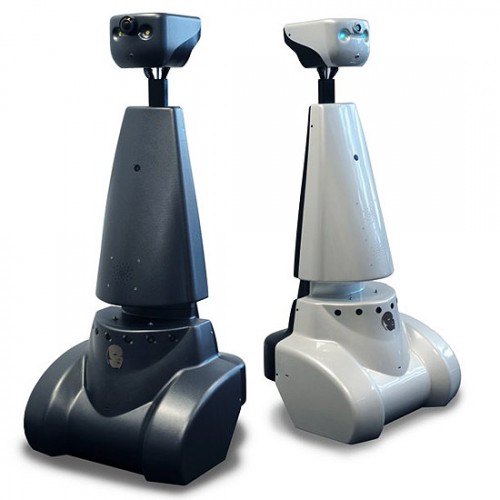Embedded Motion Control 2012
Guide towards the assignment
'ADD NICE TITLE HERE'
Introduction
Goal
Hardware
Installation
This manual describes how to the install the necessary and sufficient software to start programming the Jazz robot.
Ubuntu
Go to The official Ubuntu site and download and install Ubuntu 10.04, which is the latest Long Term Support release. Make sure that you download the appropriate architecture i.e., 32- or 64-bit.
Ubuntu Terminal
Most of your interaction with Ubuntu will be done through the terminal, the number-one way of interacting with Ubuntu using your keyboard. A terminal can be started as follows: Application -> Accessories -> Terminal. It might be a good idea to drag the terminal icon to the Ubuntu panel, as you will be using the it a lot.
Although the terminal commands may seem somewhat puzzling at first, you'll soon find out that the terminal is a nifty tool and allows for faster and more powerful access to all of Ubuntu's possibilities than the graphical interface and mouse. If you don't know your way around the terminal, have a look at these pages:
ROS
In the this project, we will use the Robotic Operating System (ROS) which aids the testing and development of robot software. ROS provides a nice open-source framework for dealing with the communication between and management of different modules, and comes with a large amount of software that can be used out of the box, including device drivers, libraries, low- and high-level software, visualizers and more. More information about ROS and its goals can be found here. To install ROS under Ubuntu 10.04, do the following:
- Add the ROS Debian source to your sources.list such that Ubuntu knows where to download ROS from. Open a terminal (Applications -> Accessories -> Terminal) and enter:
sudo sh -c 'echo "deb http://packages.ros.org/ros/ubuntu lucid main" > /etc/apt/sources.list.d/ros-latest.list'
- To be able to connect with the server, add its public key to your keys:
wget http://packages.ros.org/ros.key -O - | sudo apt-key add -
- Make sure you have re-indexed the ROS.org server:
sudo apt-get update
- Then, install ROS. To make sure you don't miss out on any packages, install all packages available in the ROS Electric release:
sudo apt-get install ros-electric-*
If you ran into problems, be sure to check the installation guide on the ROS website.
SVN
In this project, an SVN will be used for sharing and versioning the software. Every group has its own space on the SVN, and an account which has only permissions for that particular part. To set up the directory to where the code is checked out from the SVN, open a terminal and do the following:
- First, create a directory in your home directory in which we'll put all ROS-related code, files and data:
mkdir ~/ros
- Then, check out your group folder from the SVN:
svn co https://amigo.wtb.tue.nl/svn/amigo/education/emc/2012/groups/group_01 ~/ros
- Furthermore, check out the general folder, which contains the robot simulator:
svn co https://amigo.wtb.tue.nl/svn/amigo/education/emc/2012/groups/general ~/ros
Environment Set-up
So far we've installed ROS and created a local copy of the SVN. However, before you can start working, you need to do some additional set-ups to make sure Ubuntu knows where to find all ROS-related packages, scripts, etc. More specifically, every time you start up a terminal, the correct environment variables need to be set. The file .bashrc in your home directory is your friend: it's a script which runs every time a a new terminal is opened. We basically need to add some lines to this file, so open it with a text editor:
gedit ~/.bashrc
Append the following text to the end of the file:
source /opt/ros/electric/setup.bash
This will set-up all ROS-related scripts etc. every time you open a terminal. Furthermore, ROS needs to known where your software is located. Therefore, also add the following command to ~/.bashrc:
export ROS_PACKAGE_PATH=~/ros:$ROS_PACKAGE_PATH
That's it. Next time you open a terminal, .bashrc is executed, which will in turn execute the script and set the path specified above. To directly see it working without starting a new terminal, explicitly source .bashrc from the terminal:
source ~/.bashrc
To see whether it worked, try one of commands that are now at your disposal. For example, change your directory to the jazz_simulator package:
roscd jazz_simulator
If everything is correct, you should have changed directory to this package.
Installing Eclipse
Group Wiki Pages
Group 01 - Visit Wiki - <NAMES>
Group 02 - Visit Wiki - <NAMES>
Group 03 - Visit Wiki - <NAMES>
Group 04 - Visit Wiki - <NAMES>
Group 05 - Visit Wiki - <NAMES>
Group 06 - Visit Wiki - <NAMES>
Group 07 - Visit Wiki - <NAMES>
Group 08 - Visit Wiki - <NAMES>
Group 09 - Visit Wiki - <NAMES>
Group 10 - Visit Wiki - <NAMES>
